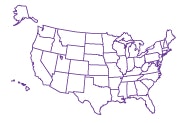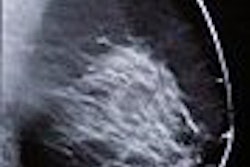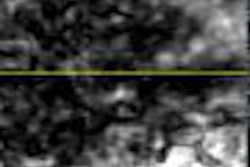
A Marietta, GA-based radiology practice found itself in a bit of an imbroglio over its full-field digital mammography (FFDM) screening program last August. Quantum Radiology routinely used FFDM for breast cancer screening, but billed the services at the standard film-screen mammography (FSM) Medicaid reimbursement rate.
According to a Quantum spokesperson, Georgia's Medicaid administrative services told them to bill in this fashion. Of course, the practice was reimbursed at the lower rate of about $67 for study, but as far as they knew they were simply following directions. On the rare occasions that they did bill for an FFDM, their claim was denied by the state.
The state also denied that it encouraged such rampant "downcoding," although currently, FFDM exams are still reimbursed at the FSM rate in Georgia.
With the emergence of digital mammography, the U.S. Centers for Medicare and Medicaid Services (CMS) created a new billing code -- G0206 -- to differentiate digital from the longstanding code for analog (76092).
But just because the code exists doesn't mean it's being used or even acknowledged on the state level: Some Medicaid programs recognize the new code and reimburse accordingly. Others seem to be aware that it exists, but don't pay for it. Finally, some states just don't ante up for anything but FSM. As the case in Georgia so aptly demonstrated, a fair amount of confusion surrounds who pays what to whom for which services.
To help clear up the situation, AuntMinnie.com took on the exhaustive task of compiling FFDM policies and reimbursement rates for all 50 states. Below, you can click on the rate chart for an overall view of FFDM rates or on the interactive map to peruse rates in individual states.
 |
| Interactive Map | Rate chart |
The experience gathering this information was quite colorful. For example, North Carolina's Medicaid hotline for patients put this reporter on hold for more than 40 minutes before transferring the call to its provider information hotline. Another 43 minutes later, the hotline staffer declined to answer questions from someone who was not a medical service provider. Other states, such as Delaware, bucked public information laws and refused to answer any questions about FFDM payments.
In Tennessee they're happy to answer questions, but you have to ask a lot of them -- the state has contracts with multiple regional providers and pays out at least five different reimbursement rates.
Of course, not every attempt to contact state Medicaid programs was a headache. In Colorado, the first person to answer the phone actually knew, and shared, the answer. New Hampshire has a Web site with a calculator that figures out cost as well as reimbursement by procedure and insurance company.
In the end, the state-run programs for early cancer detection in women proved to be the richest resources. These programs were created by the Breast and Cervical Cancer Prevention and Treatment Act in 2000, and provided mammograms for about 381,000 women in 2006.
According to the Centers for Disease Control and Prevention (CDC), these program participants are authorized to use either FFDM or FSM at the analog reimbursement rate. "Currently, there is insufficient evidence that digital mammography yields a greater reduction in incidence and mortality," the CDC noted on its Web site. In many cases, these reimbursement rates differ considerably from the usual Medicaid rates.
We do want to make it clear that this list is not the definitive word on FFDM Medicaid reimbursement. In fact, we'd like to make this an ongoing, interactive project. If you have different or updated information regarding statewide FFDM reimbursement rates, please click here to drop us a line.
By Marty Graham
AuntMinnie.com contributing writer
December 20, 2007
Related Reading
FFDM makes headway as primary breast cancer screening modality, November 27, 2007
Walking the tightrope: The legal and regulatory impact of digital mammography, October 11, 2007
Positioning is the key to making the most of FFDM, October 10, 2007
Top 10 considerations for FFDM and PACS integration, October 4, 2007
Copyright © 2007 AuntMinnie.com



















